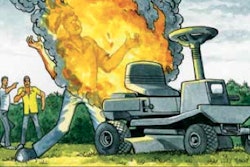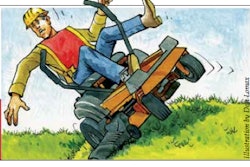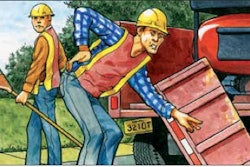
What the expert says: Tugging a gas line can be more dangerous than breaking one, explains Dave Tibbetts, who’s worked in the landscaping industry 25 years and is president of New England Land Design, Tyngsboro, Massachusetts. When a line is pulled, its connection to the gas main at the house or building can be loosened, causing a leak that slowly fills the structure. A spark from an appliance or light switch will ignite the gas. When you break a gas line, many systems automatically seal and the vapor typically doesn’t seep into the building.
Most underground utility strikes can be avoided if you dig only after calling 811, the national “call before you dig” number, and all utility companies have marked their lines. In most states, the call must be made at least 72 hours prior to digging, and not doing so is a crime in some areas. If utilities aren’t marked and a supervisor tells you to dig anyway, it can be dangerous to the employee digging and someone else later. Not digging is within your rights.
Also be aware utility locators “don’t have x-ray vision.” Improper location is a factor in ninety percent of utility strikes, Tibbetts estimates. If you will be disturbing ground within 40 inches of markings, you should hand expose the utility.
Private lines such as the propane line in the accident described and electric lines running to sidewalk lamps and sheds can pose the most danger since utility companies don’t mark them and often they aren’t installed to code. Landscape lighting, sprinkler systems and outbuildings with electricity are clues underground lines are present. Locate and expose lines before excavating.
If you damage a gas line, notify a supervisor, clear everyone from the vicinity and shut off or extinguish sources of ignition such as equipment and vehicles, communication devices including cell phones, and cigarettes. Call 911 and the utility company after damaging a gas or electric line. If you damage an electric line with a machine such as a backhoe, remain on the equipment until you clear it from the line. If you must get off because of fire or another hazard, jump rather than step off. If you simultaneously touch the ground and equipment, your body could become a conduit for the electric current.
For more information about excavating near buried utilities, see the best practices report here.











